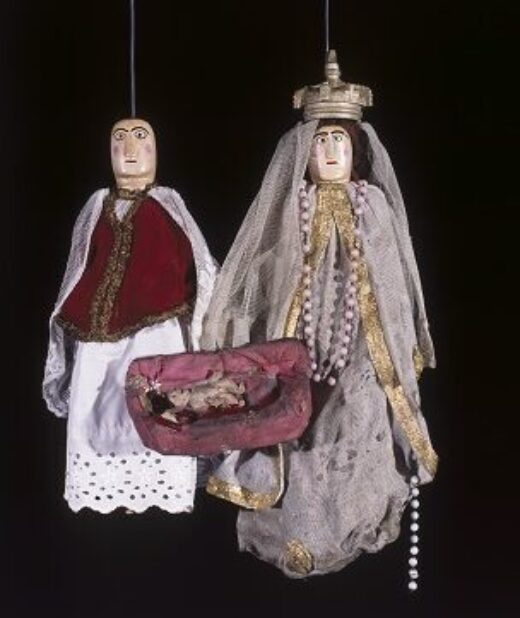
Printed
16 pages
Auto do Nascimento do Menino
Auto do Nascimento do Menino (Auto of the Child’s Nativity) belongs to a cycle on the theme of religion for traditional Portuguese puppets from the region of Alentejo, known as Bonecos de Santo Aleixo. This repertory also includes the Auto da Criação do Mundo (Auto of the Creation of the World) and Os Martírios do Senhor ou Auto da Paixão (The Suffering of the Lord or Auto of the Passion).
In the 1970s, this theatre had almost disappeared. Thanks to an institutional plan, however, all the puppets and the altarpiece of the Bonecos were bought from the last traditional owner-puppeteer - Mestre António Joaquim Talhinhas – and entrusted in 1980 to the actors of the professional theatre company Évora (CENDREV). Today, performances of this play follow the outlines of Talhinhas’ text. They aim at safeguarding the local heritage, the origins of which presumably date back to the end of the 18th century.
The repertory that was passed down orally, with no written record, featured moments of improvisation. Short extracts were published in some anthologies (Azinhal Abelho, Teatro Popular Português, vol. VI (Ao Sul do Tejo). Braga: Editora Pax, 1973) and audio recordings were made by Michel Giacometti and Fernando Lopes Graça (Edições Strauss, CD SP4240, 2000).
The Auto is inspired by the major events of the Nativity of Jesus, up to the Adoration of the Shepherds and of the Magi. It ends with a song by the Anjo-Mestre (the Choirmaster of the Angels). The text alternates between dialogues and rhyming stanzas (décimas) with songs from the choir of Angels, accompanied by a Portuguese guitarra. The show is mostly comic and satirical. The characters speak in the local accent from Alentejo.
Since the second half of the 20th century, the Shepherds of the Auto do Nascimento show linguistic traits from the North of Portugal – the place of origin of day labourers, the “ratinhos” (mice) hired at harvest time to replace the local workers gone on strike for better wages.
The birth of Jesus
Saint Joseph and the Virgin Mary come on, looking for a place to rest. Marie is about to give birth to the Infant Jesus, but all the doors are locked. They exit the stage. The next scenery shows the Nativity scene with the Holy Family. A choir accompanied by guitar music announces the birth of Jesus and the arrival of the Shepherds, who have come to bring him gifts. They exit the stage when the Magi arrive. The latter leave the gifts and greet the child. The Choirmaster of the Angels initiates the Dance of the Angels and the play ends with a last song of praise, sung in unison.
First performance
Centro Cultural de Évora, Escola de FormaçãoTeatral, Grupo IV.
Publications and translations
Autos, Passos e Bailinhos. Os textos dos Bonecos de Santo Aleixo. Christine Zurbach, José Alberto Ferreira, Paula Seixas (dir.), Évora: Casa do Sul/Centro Dramático de Évora/Centro de História da Arte e Investigação Artística, 2007